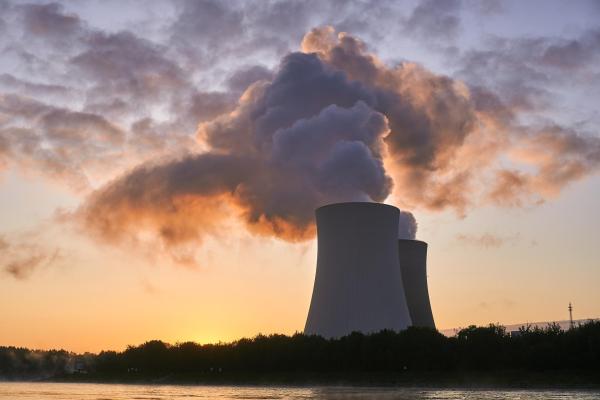In the last half-century, commercial nuclear power plants have gone from large to huge to gargantuan – it’s not uncommon for a nuclear power station to contain multiple reactors that each produce over 1000 MW (megawatts) of electricity from correspondingly large and complex reactors – a single nuclear generating station with four 1000 MW reactor plants is cranking out 4 GigaWatts of electricity – nearly 100 GW hours of electrical energy daily - enough to supply the electrical consumption of a city of several hundred thousand. However, four reactors of this size will cost billions of dollars, require at least a decade to construct (and still more time to overcome legal challenges and other obstacles raised by anti-nuclear activists and those who don’t want a power plant like this in their backyards), and requires teams of highly skilled operators, supervisors, technicians, engineers, regulators, and others to build and operate.
Large nuclear reactor plants – especially the way they’re built in the US – are one-off designs, tailored for each location, painstakingly designed with their plans and specifications equally painstakingly reviewed before they can be permitted to operate. It might make sense to power large cities with large nuclear power stations – but not necessarily smaller towns, especially considering how much energy is lost when transmitting energy over long distances. For rural areas and mid-size or smaller cities, smaller power plants might make more sense than the enormous reactors built over the last half-century. Something like the Small Modular Reactor (SMR) that the Nuclear Regulatory Commission just announced it would certify for use.
Small modular reactors are, unlike large reactor plants, designed to be small, simple, and mass-produced. These characteristics make these reactors less expensive, easier to operate safely, and less susceptible to catastrophe. Additionally, their modular design means that additional units can be quickly added to increase capacity if the population grows, industries move into an area, or the local power grid is extended to incorporate other small communities.
History
Although the approved design is new, the concept is not – the Army designed small reactors in the 1950s; they were intended to power radar stations in the Canadian tundra or small camps or bases in far-flung locations worldwide. The Army’s reactors were designed to be carried on a few trucks, set up in a day or less, and operated by a small team of operators. Unfortunately, an accident at a test reactor in Idaho killed all three operators; this and the rising cost of the war in Vietnam eventually caused the Army to terminate its small reactor program in the mid-1960s.
By the time the Army’s small reactor achieved criticality, there was already a successful program churning out small nuclear reactors – Hyman Rickover’s Naval Nuclear Power Program. Insisting on utter reliability and near-perfect safety – as well as a design that could survive battle damage and continue functioning – Rickover’s reactors had an admirable safety record. Still, they required a relatively large number of operators, each of whom spent two years in intensive (and expensive) training and a more robust design than is required for a civilian reactor not expected to have to survive a battle. But it’s important to note that the US Navy has built more than 200 submarine nuclear reactors – the great majority of which were mass-produced in the same manner as what’s proposed for the recently certified SMR, with nary a meltdown or other severe accident. Naval nuclear power demonstrates that small, mass-produced nuclear reactors can be operated safely.
Let’s get small!
Say you’re moving to a new home and trying to decide what size truck to rent; does it make sense to use a full-sized truck if you’re living in a small 1-room apartment? Not really. That’s just too much truck; in the world of power generation, that’s “unused capacity.” That truck is too expensive and harder to drive safely. To cut down on the trouble and expense, you use the smallest truck you can get away with. By the same logic, it makes more sense to use a small reactor to power a small city or town – smaller reactors are less expensive because you’re not paying for unused capacity, there’s less to go wrong, and so forth. Sometimes smaller is better.
One advantage of mass-produced reactors is the cost – it’s easier and cheaper to make 100 identical reactors than to create 100 unique reactors. It’s also easier to be licensed, building a design that’s already been reviewed and approved…not to mention that operators trained on one reactor plant can quickly transfer to another identical plant. More importantly, given the public’s fear of a nuclear accident, it’s easier to design and manufacture safety systems for a small reactor. With less heat to remove, safety systems are easier to create and can be passive systems relying on simple natural laws rather than complex engineering.
There are times when it makes sense to build a huge nuclear reactor plant, or even a site with multiple large reactors, just as there are times when it makes sense to use a huge truck for a move. But there are many more small cities and rural areas in the US than huge metropolises, and for those, a huge reactor is too much for the demand. A small modular reactor or two would be perfect – enough to power the city, including charging electric vehicles.
We need energy to maintain our society, but as we’re finding out, that energy should be reliable and carbon-free. And I think we’d agree that safety is also an important factor! The recent certification of a standard design for small modular nuclear reactors promises all these. Let’s hope that a lot of them are built.




